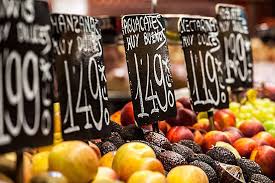PRICING IN AGRICULTURE
Pricing refers to the process of determining the amount of money that consumers
will pay for a product or service. It involves setting a price that balances
various factors to achieve business
objectives, such as profitability, market share, and competitive positioning.
TYPESS OF PRICING
-
Cost-Based Pricing : Setting prices based on the costs of production, including materials, labor, and overhead, plus a markup for profit.
-
Value-Based Pricing : Pricing based on the perceived value of the product to the customer, rather than the cost to produce it.
-
Competition-Based Pricing : Setting prices based on the prices of competing products in the market.
-
Market Demand : Adjusting prices according to consumer demand, with higher prices when demand is strong and lower prices when demand is weak.
-
Psychological Pricing : Using pricing strategies that affect consumer perception, such as setting a price at 99.90 nair instead of 100 naira.
-
Dynamic Pricing : Adjusting prices in real-time based on changing market conditions, supply, and demand.
factors influencing agricultural pricing
-
Prices fluctuate based on the availability of products and consumer demand.
-
Costs of inputs like seeds, fertilizers, labor, and equipment directly impact pricing.
-
Economic conditions, competition, and market trends can affect prices.
-
Higher quality and better-graded products typically command higher prices.
-
Prices vary with seasons; some products are more expensive off-season.
-
Location of production and distance to markets can influence transportation costs and, consequently, prices.
-
Subsidies, tariffs, and price controls by the government can affect pricing.
-
International demand and trade policies impact prices of exported and imported agricultural products.

